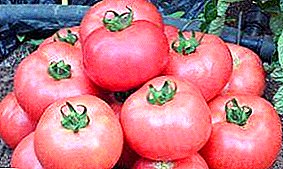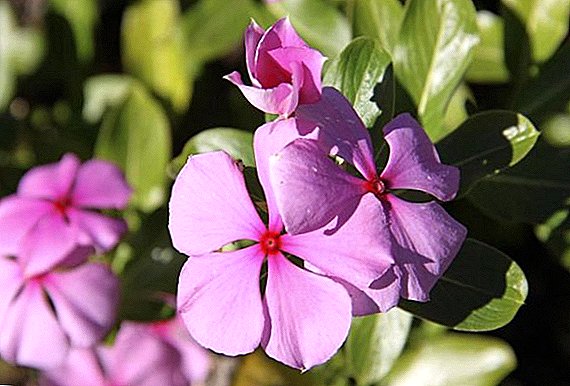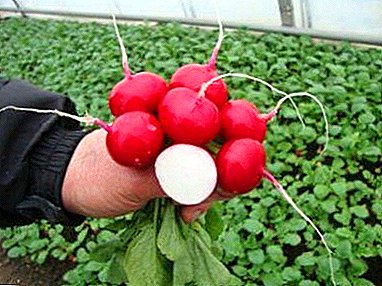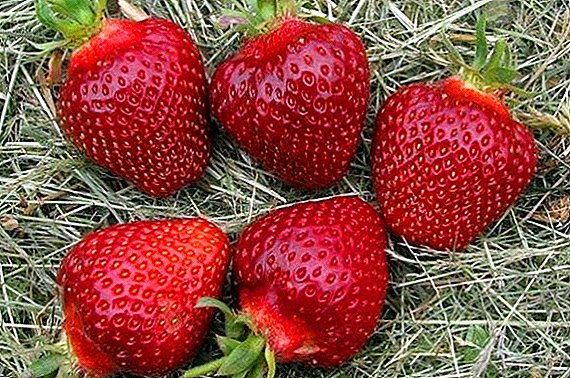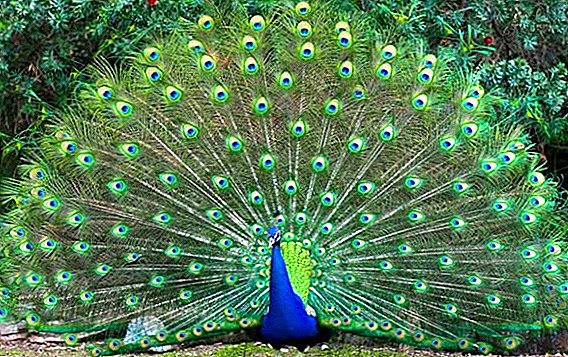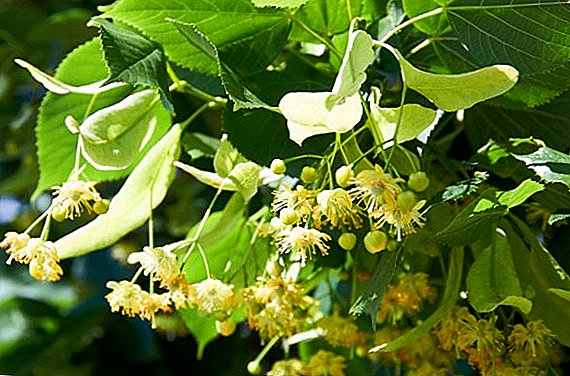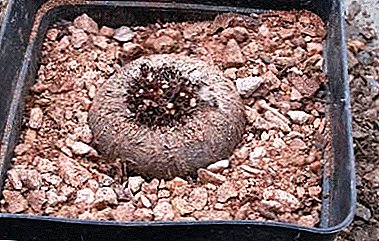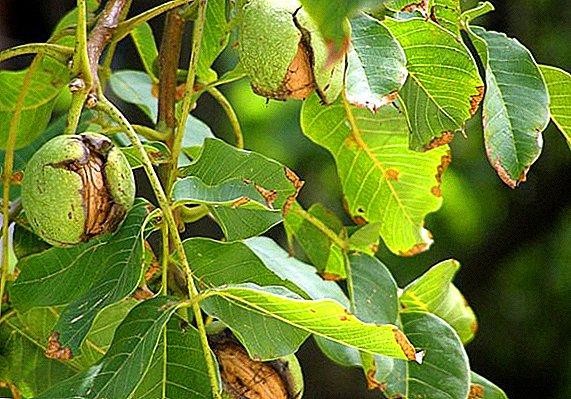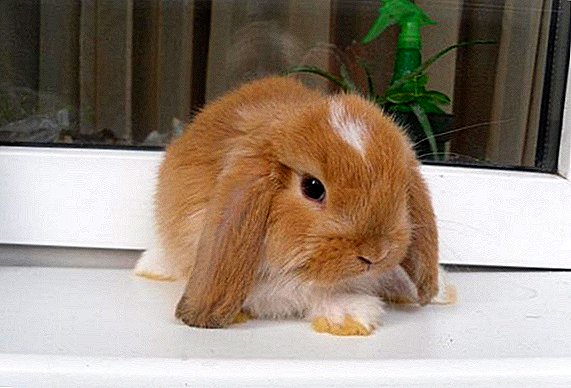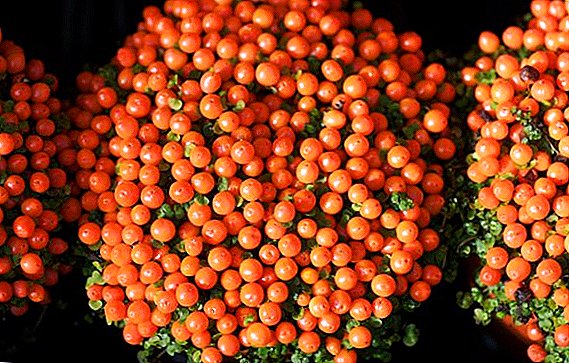 Nertera (coral moss) - tropical exotic grown in our latitudes as a one-year decorative container culture. An amazing plant came to Europe relatively recently, in the wild, perennial is found in New Zealand, Australia, Southeast Asia and South America.
Nertera (coral moss) - tropical exotic grown in our latitudes as a one-year decorative container culture. An amazing plant came to Europe relatively recently, in the wild, perennial is found in New Zealand, Australia, Southeast Asia and South America.
Botanical description
The genus of nerter plants belongs to the Marenov family, has many varieties, in Latin the name of the flower sounds like Nertera granadensis. Translated from the Greek word "nertera" means "low" or "low." The plant is perennial, ground cover. Natural habitat - the mountain slopes of South America, Venezuela, Colombia, Ecuador, Chile and Peru. In the climatic conditions of Russia, the plant is grown as an ornamental.
Find out which plants are best suited for offices, nurseries, bedrooms, for balconies.
Bush
Nertera is a short perennial with a grass stem and long, thin shoots from 10 to 25 cm long, which depends on the variety nerter. The shoots are densely covered with small rounded light green leaves. They are oval in plants, the diameter of the leaf blade is 0.5 cm.
In the period from April to June, the plant blooms, and on it appear inconspicuous and not very noticeable star-shaped flowers. Flowers nerter not collected in groups, they are arranged separately. Look like a small white star, with a tubular or funnel-shaped greenish corolla.
Nerters do not represent decorative value of flowers. By the middle of summer shoots reach maximum length and magnificently covered with small leaves. This ornamental plant is ideal for growing in wide, shallow pots.
Did you know? When plants get sick, their response to the disease resembles the symptoms of the disease in humans: the temperature of the stems increases, oxygen uptake (breathing) becomes rapid.

Berries
Under favorable climatic conditions of cultivation, the plant grows so many berries that from a distance it looks like a pot with orange beads. Bright berries remain on the shoots until winter. It is they who make up the particular ornamentation of this low herbaceous perennial; they are pink, orange, white or light yellow. Their diameter reaches one centimeter. Berries from this plant are inedible.
Popular species
People buy this decorative flower in a flower shop for one season in order to decorate balconies, loggias or patios. All summer, the plant pleases the owners of the berry placer, by the fall they crumble, and the plant is thrown away.
But if you try, you can save the flower until next year - after all, nertara is a perennial. There are several very elegant types of nerters, which are in demand and popularity among fans of ornamental pot crops. Bioenergetics have been attributed to the nerter living in houses a beneficial effect on the owners. According to them, several nerter plants growing near plants transmit a charge of positive activity to people living in the house.
Bioenergetics have been attributed to the nerter living in houses a beneficial effect on the owners. According to them, several nerter plants growing near plants transmit a charge of positive activity to people living in the house.
Pressed down
Nertera The pressed Latin name is "Nertera depressa". The plant is a perennial herbaceous stem, ground cover, brought from South America. On it at the end of flowering the flowers turn into not very large, round orange fruits.
Ripe berries hold on the inflorescences for several months, until late autumn. The plant lushly spreads in a pot or container and forms a cushion-shaped green lawn thickly dotted with orange inedible berries.
Did you know? Experienced geologists know a lot about wild flowers. If you know their features, you can visually determine which minerals or substances are in the soil. For example, adonis grows on soils rich in lime, and wild violets grow rapidly if there is a lot of zinc in the soil.

Balfour
Nertera Balfour, Latin name "Nertera balfouriana". The plants are short, growing under the ground, the leaves are round, green. Herbaceous stems are rather long (compared to other varieties of nerter) and by the middle of summer they reach 20-25 cm. The flowers are small, inconspicuous, in the form of asterisks.
Ripening berries are droplet-shaped, their color is orange. This ornamental plant is grown for sale in flower greenhouses. In the wild, the plant is perennial, in Europe it is grown as an ornamental annual.
Granadskaya
Nertera Granada, in Latin the name sounds like "Nertera granadensis". The plant was brought from southern Mexico. Low-growing perennial, grassy stalk, not lignified, thin stalks, creeping. Covered with small green leaves, elongated round shape, length from 3 to 7 mm.
In May - June, the plant blooms and becomes covered with small flowers of yellowish-green color. At the end of flowering on the plant formed round berries of bright orange color. They are not prone to fall from the bush and for a long time retain the decorativeness of the herbaceous perennial. 
Ciliated
Nertera Ciliated, Latin name "Nertera ciliata". This variety nerter brought to Europe from New Zealand. The perennial is not prone to lush growth, the usual diameter of the green cap of the bush is not more than 25 cm. The flowers and leaves of the Cernitra nerter have microscopic cilia, which gave the name to this species. The leaves are green, lanceolate. The flowers are small, inconspicuous, white-green. Ripe berries have a round shape and bright orange color. 
Cunningham
Nerter Cunningham, sounds in Latin as "Nertera cunninghamii". This perennial is also a New Zealand aborigine, brought to Europe a little more than 100 years ago and is very popular, thanks to the round red fruits that adorn green curtains for several months.
The stems of this ornamental perennial are green, grassy. Creeping stems grow cap up to 20 cm in diameter. Flowers on this perennial as invisible and inconspicuous, as well as on other varieties of this plant.
About the difficulties of home growing
Perennial is grown mainly because of its attractive and bright fruits of exotic species, but their abundance requires optimal air temperature conditions and regular watering.
The greatest difficulty in perennial cultivation of nerters is the need to find a room for a plant with a cool climate for wintering. The usual living room does not suit him, there is too hot for him.
If the temperature in the "wintering" room stays in the region of + 20 ... +26 ° C, then the perennial will not be able to enter into a dormant period, which will lead to a complete loss of decorative green "cap".
Important! The peculiarities of care include spraying the leaf surface with melted or boiled (soft) water. It must be remembered that the sprinkling can be carried out only in the period when the plant does not bloom.

The best conditions for nerters
What conditions favor the highest decorativeness of coral moss? If you acquire a perennial plant in spring in the horticultural center, when the weather is warm enough (temperature is above + 12 ... +15 ° C), you should immediately place the flower on the balcony, because in warm and dry houses the perennial will not stay beautiful for a long time. lush.
It should not be forgotten that the purchased plant was grown, most likely in a greenhouse. Therefore, it is necessary (at first) every day for an hour or two to make on the balcony for quenching. Every day the time of the street “walk” needs to be increased and in a week the plant on the balcony should be left for permanent “residence”. In case of recurrent frosts, it should be brought into the room and left there until the threat of frost does not recede at all.
Lighting
Nertera requires bright, but not direct sunlight. Decorative perennial also grows well in partial shade. It can not stand direct sunlight, it can cause burns on the leaves.
They love shade and cannot tolerate direct sunshine from adiantum, chlorophytum, clivia, monstera, anthuriums, spatifillum, ficus, aspidistra.
 In winter, the lack of natural light is compensated by additional artificial lighting, which is placed at a distance of half a meter from the flowerpot. This is necessary because the lack of light affects the ornamentation of the perennial: grassy stems begin to stretch and grow, "coral moss" becomes ugly.
In winter, the lack of natural light is compensated by additional artificial lighting, which is placed at a distance of half a meter from the flowerpot. This is necessary because the lack of light affects the ornamentation of the perennial: grassy stems begin to stretch and grow, "coral moss" becomes ugly.Air temperature and humidity
- In the warm season, these potted flowers grow beautifully and bloom at a temperature of +22 ° C.
- With the onset of autumn, the street temperature drops to + 12 ° C, but the nerta feels great at low temperatures.
- With the onset of spring, as soon as the air temperature warms up to + 7-8 ° C, the nerter is taken out onto the street, where it remains until late autumn. If the spring frosts suddenly return, the flower pots are temporarily evacuated to the house.
Did you know? Flowers, like any other living organism of the planet Earth, live according to a strict bio-rhythm - their cups open in the morning with the rising of the sun and close at sunset. This rhythm sets the rotation of the Earth around its axis.

Learn how to create conditions for euharis, shefflera, marginata dracaena, pelargonium, havortiya, cyclamen, crossander, geranium, diploadien, euonymus, epicea, clivia, calceolaria, gloriosa in the period of rest.
Conditions for successful wintering:
- If the florist wants to grow this plant for several years, then he needs to think about a cool room where the perennial will spend the winter. The wintering place should be well lit and have a temperature not higher than + 10 ... +12 ° C. In winter, at such temperatures, the plant will remain perfectly and in the spring it will be able to continue its growing season.
- The room where this perennial hibernates must be aired 2-3 times a week, but you need to ensure the absence of drafts.
- If the pot with “coral moss” is installed on the window sill, it is necessary to partially separate (with the help of a plastic film) the space of the window sill from the common space of the room. This is because usually there are radiators under the windowsills, which heat and dry the air in the room. The plastic film fixed on the window opening will become a barrier between the hot air of the room and the nerter.
- Watering perennials in a state of rest should be minimal, but at the same time, the grower should not allow the soil to dry out in a pot.

What soil is needed for a plant?
Nertara of any kind prefers loose, well-aerated soil. The access of oxygen to the roots for perennial is just as important as the access of moisture.
Learn how to apply perlite and vermiculite, sphagnum, peat, hydrogel and how to grow plants in hydroponics.For the preparation of the landing substrate in equal shares take:
- turf and leaf soil;
- three year humus;
- high peat;
- fine river sand.
Important! The soil pH for nerter should not be alkaline, the plant likes neutral or slightly acidic soils. In order not to make the soil too alkaline, it is undesirable for a florist to use high-calcium water for irrigation.

Breeding rules: how to plant a coral berry
This perennial can be propagated in several ways: seedlings (obtained from seeds), separation of the root system and rooting of green cuttings.
Seed propagation
- Sowing is carried out in February - March, seeds are sown in a nutrient substrate composed of equal parts of peat, soil (leaf, sod and humus) and fine river sand.
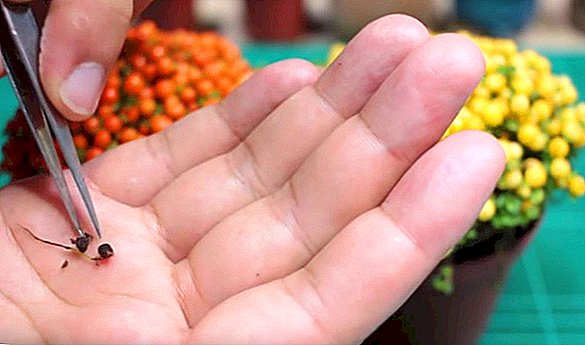
- Drainage is placed at the bottom of the seedling tank (expanded clay, thick branches, pieces of foam), and then the ground is filled up there.
- Before sowing seeds, the surface of the soil is leveled and only after that the small seeds of perennial are scattered (trying not to thicken) over the soil.
- Then the seeds are covered with a thin (2-3 mm) layer of sifted soil and cover the seedling container with a transparent film. This is done so that moisture does not evaporate from the surface of the soil.
- After this, the seedling container is placed in a warm place.
- Further care of plantings is to ensure a constant temperature in the range from +22 to +26 ° C.
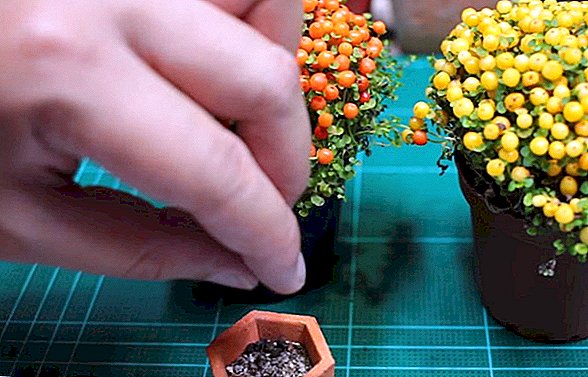
- To wait for the first shoots, the florist needs to be patient. The seeds of this plant sprout very slowly and unfriendly. The first rare shoots of seedlings will seem only in 30-35 days, and all seeds will germinate within three months.
- As soon as the first sprouts appear, put the seedling container on the window sill, close to daylight (out of the reach of direct sunlight), and instead of watering, periodically spray. When the plants grow, get stronger and release a couple of true leaves, pick them out on individual pots.
- In early spring, natural daylight may not be enough for seedlings, in which case light up tender shoots with fitolamps for 4-7 hours daily.
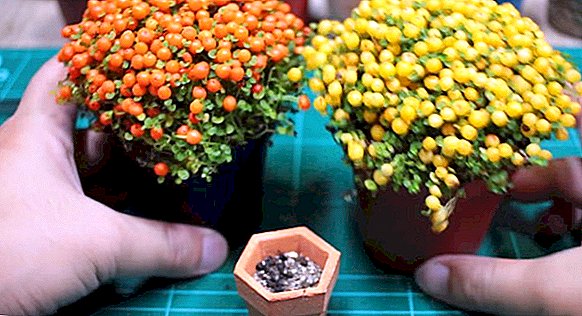
Did you know? Flower petals in many (wild and cultivated) flowers have ultraviolet coloring that is invisible to the human eye. Nature has endeavored to attract pollinating insects even to small and inconspicuous flowers. Some types of flower petals have UV spots, others have stripes or zigzags.
Propagation by division of roots
In August - September (as soon as the first berries begin to crumble), the root system of the “coral moss” can be divided into parts for reproduction. The rhizome is divided into several parts, so that each plant separated from the mother liquor has its roots. Then delenki are seated in separate pots with nutrient mixture.
A transplant of a plant into a new pot should be done in spring or, possibly, in summer (in August), when it is possible to divide an overgrown bush, because at home the easiest way of reproduction is root division.
Because of the shallow and extensive root system for planting, the nerters take a small and wide pot with a drainage layer laid in advance on the bottom, for example, in the form of expanded clay balls, and holes in the bottom to drain excess moisture into the pan.
Reproduction by cuttings
Nerteru easy to root and a green handle. Prior to this, set the cutting in a glass of water so that it is 2/3 of the entire length of the stem was immersed in liquid. For the fastest formation of roots, you can add a special preparation for rooting (for example, Kornevin) to the water.
After two weeks, white roots will appear on the grassy stem. When they reach a length of one centimeter, a new plant can be planted in a separate pot with a nutrient substrate. Caring for a flower formed from a green stalk is identical to the care of adult plants nerter.
Learn how the laurel, plumeria, orchids, petunia, royal geraniums, cacti, campsis, dieffenbachia are slouched.
Plant Care
In summer, the care of the plant is:
- in timely watering;
- in monthly supplements with nutritional and mineral complexes;
- in the removal of dry or dead stems;
- in the separation of highly expanded plants into several smaller plants;
- transplanted from depleted soil to a new, fertile substrate.
 However, it should be remembered that, although the nerter likes low temperatures, when the air temperature drops below +5 ° C, plant growth will stop. Therefore, with a steady cooling, it is transferred to a bright and cool room for wintering. Water at this time less often and less abundantly, but do not allow the substrate in the pot to dry completely. The plant must be quiescent.
However, it should be remembered that, although the nerter likes low temperatures, when the air temperature drops below +5 ° C, plant growth will stop. Therefore, with a steady cooling, it is transferred to a bright and cool room for wintering. Water at this time less often and less abundantly, but do not allow the substrate in the pot to dry completely. The plant must be quiescent.Did you know? In the 19th century, Irish Catholics planted flowers with white petals on a bed at the door of the house, while Irish people who adhered to the Protestant religion planted flowers with orange petals. So from a distance one could notice to which denomination the family living in the house belongs.
How to water
- Under natural conditions, nerta grows in tropical rainforests, so at home the flower should often be sprayed with warm water, this requirement is especially important in the summer. During flowering nerta not water on the sheet. Place the flowerpot on a saucer tray that will add water for irrigation. Pour water into the pan as the topsoil in the pot dries.
- In winter, the soil is moistened only as needed and very moderately.
- With the onset of spring, when the nerter vegetation begins, vegetation needs to be resumed.
- In the summer, with the exception of the flowering season, it is worth watering the flower with warm water over the leaf. Such a "summer rain" will benefit the plant, save it from the heat and help keep the substrate in the root zone moist. For irrigation it is best to use warm boiled water.

How to feed
In summer, the nerter is fed monthly, for this purpose any complex mineral fertilizer is suitable for potted flowers with a low nitrogen content.
Overwintered perennial in early spring (March - April) are transplanted into a new, not depleted by the previous vegetation, ground. Пересадка должна быть сделана еще до начала цветения.
If initially a sufficiently fertile soil was used in the preparation of the substrate, then the “coral moss” does not need additional feeding in the first two months after transplantation.
Soil care
Twice a week, the top layer of soil in the planting tank should be loosened. This is done so that the roots of the ornamental perennial get access to oxygen. After this procedure, the soil becomes lighter and more hygroscopic, moisture and air flow well through the roots of the flower, and excess water flows into the sump without interference (we avoid stagnant water). To loosen the soil, you can use a special cultivator for home flowers or the usual table fork. 
Transfer
For transplanting adult perennial, you can use the same pot in which the flower grew before transplanting. To prevent damage to the plant, it must be carefully removed from the planting container along with a clod of earth. To make this process as painless as possible for nerters, you need to hold a knife blade between the inner walls of the pot and the earthy clod in which the flower grows.
Then (holding the plant) turn the pot and knock on the bottom of the knife handle. The contents of the container can be easily separated from the walls. Gently shaking, you need to pull out of the pot earthen clod with the roots of a flower and gently shake off the soil in which the nerter grew.
Now we begin transplantation:
- At the bottom of the pot is laid drainage (expanded clay, pieces of foam).
- Landing substrate is filled up (its composition was given above).
- Nerter is planted.
- Moderate watering is carried out (200 ml of water).

Important! It must be remembered that within seven days after transplanting the disturbed flowers should be covered from direct sunlight, it is possible that the pot should be set in partial shade. If the flower is located on the southern window-sill, it should be covered with a newspaper sheet from the sun.
How to deal with diseases and pests nerter
When growing this flower can cause problems with diseases or insects:
- gray mold (reason - leaf moisture);
- root rot (reason - waterlogging);
- the appearance of spider mites (the reason - too dry and hot air);
- other insect pests (source - adjacent indoor plants).

How to deal with major diseases:
- If a lot of young leaves and shoots appear on the nertare, but the flower does not bloom and there are no fruits on it, it means that the plant is too hot and dry. The pot should be moved to a room with a lower temperature and periodically moisten it with a method of spraying moisture in the air.
- Grass shoots rot at the point of contact with the soil - most likely it is the result of waterlogging, and the soil in the pot turned into a "swamp". Within 7-10 days the plant can not be watered. Watering (moderate) is renewed only after the surface of the soil dries in the pot.
- The tips of the grass shoots turn brown and die off - the flower has been burned by the sun and the soil in the pot is very dry. Nerter needs to be moved to a slightly shaded place and water well.
- The leaves of perennial became sluggish and lost turgor - the flower was occupied by harmful insects. It is necessary to make the treatment of the plant with any insecticide. How to carry out the procedure: a plastic bag is put on top of the pot with perennials, then the plant is sprayed with insecticide under the bag. It is left in this state for half an hour. Then (if there is no frost) the plant needs to be taken out on the balcony or on the street, remove the package and air well for 5 minutes.

Did you know? Different types of perennials nerters are used to create small Japanese house gardens. The Japanese are contemplators of beauty and enjoy not the scent, but the "appearance" of the plant.
The poisonous properties of berries
Fruits nerters are not toxic, after eating them, it is impossible to die, but they cause significant disruptions in the work of the stomach and gastrointestinal tract. If there are small children in the house, then pots with a nerteroy should be installed at a height where they are guaranteed they will not reach. The kids are very attracted to the bright, elegant "berries", and you need to exclude their contact with the plant dangerous to health.
A beautiful exotic plant will decorate the patio or patio, will also decorate the interior room. Nerteru can be installed in any premises, the main thing: to provide her with natural or artificial lighting. Knowing how to properly care for the decorative perennial, it is easy to grow. An attractive tropical guest will delight you and households with its beauty throughout the summer season.
Video: how to care for nerter
How to grow a nurse at home: reviews
And what if you plant it on decorative soil?I have been living for 2 weeks. So, I took a glass bowl, like a mini aquarium. She put pebbles in there and put hydrogel on pebbles. The roots are not separated from the ground, so I just shook off and put the rest on the hydrogel with a lump of earth. I pour a lot of water, the roots at least a quarter or even half in water. The first couple of days I stood in the ground - I almost died. Then I moved to the aquarium, at first I poured less water for a few days, nerter did not like it, again wither and start to dry. Water eats sooo much, a couple of times a day, spray.
But now there are almost no rotten leaves, well, only on the sides of a couple if. And the berries !!!!! Some seemed poured, skukozhennye straightened up a bit! Some people really do, but I think this is a natural process.
I worry that when the ground is exhausted on the roots, than to feed it ... and mine even new lists appear) and old ones are slowly drying out)
Vertigogo
//forum.bestflowers.ru/t/nertera.2904/page-2#post-849805
And I would water and spray. ;-)) Nertera, from her own experience, loves the swamp. ;-))) Even the smell is specific to her. ;-))) Maybe you spray a solution Epin? And create greenhouse conditions? I think you lack moisture. (By the way, I haven’t seen your photos either.)@ nn @
//iplants.ru/forum/index.php?s=74586fdab9a5d151f5c5615bda4cfc1a&showtopic=25827&#entry260931
so a week my nerter sits in the ground with a large colic biogel.it can be seen through the bare twigs in the middle that the top layer of the roots, which are not in contact with the ground, dries out. But the color and well-being like this is not affected. But it seems to me that she was better in water with biogel.
New leaves appear mainly on the edges of the bush, and the middle is on the contrary bare and drawn out. but I still do not want to believe that it is a one-way flower)) we are waiting for flowering)
Vertigogo
//forum-flower.ru/showthread.php?p=62461&postcount=19





